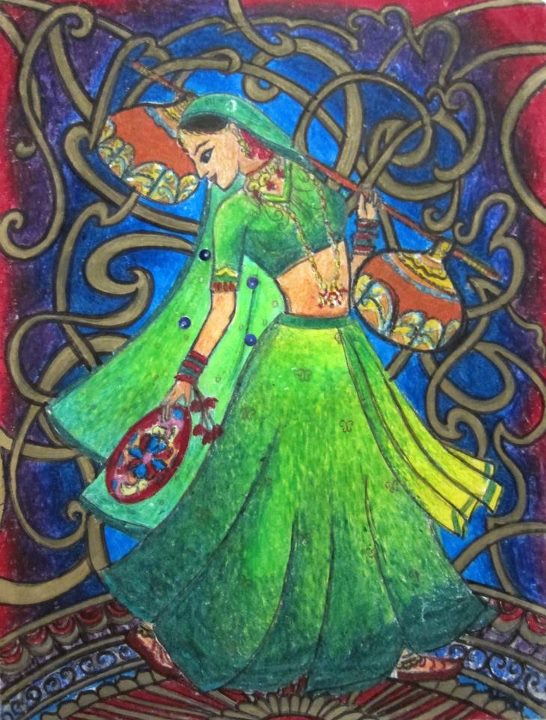
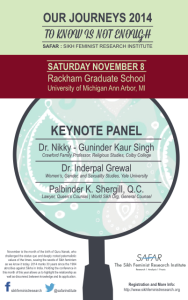 Guest post by Sarina Kaur
Guest post by Sarina Kaur
“A Sikh’s entire life is life of benevolent exertion”. Sikh Rehat Maryada (Code of Conduct)
Benevolent exertion. These powerful words along with countless examples from history, gurbani, and rehat remind us that to question, challenge, and think for the purpose of informing our actions according to the Guru’s teachings is a Sikh’s birthright, privilege, and responsibility. This benevolent exertion toward an egalitarian world and empowered society devoid of oppression is a standard rooted in our collective psyche. But to know this, is not enough. The first Sikh Feminist Conference in North America, by SAFAR: the Sikh Feminist Research Institute, seeks to unpack what this means for Sikhs of the 21st century.
Personally, at every turn in my own journey toward creating a life imbibed with thoughtful action toward a more just and humane world, I have craved to understand and experience the unspoken viewpoints of the Kaur experience. Today, few can deny that no matter where you look- within the Sikh social context or in the global context-the dominant narrative is not inclusive of the female voice; that our calibrated center-where we collide as a society-is not in line with the standards our Guru’s introduced. A space for expansive revival, attention, voice and praxis to the feminist values and egalitarian politics inherent within Sikhi is a step toward a more calibrated center.[1] SAFAR’s Conference Program promises such progressive steps.
Distinguished keynote panelists, Dr. Nikky-Gurinder Kaur Singh, Dr. Inderpal Grewal, and Palbinder K. Shergill will launch the discussions and introspections for the day while exploring the topic “What Do We Know?” By exploring what knowledge exists from various sources, this panel promises to dive into an exploration of the intersectionality of Sikhi, feminism and discourse on Sikh Feminism. Each of the panelists is a pioneer in her own right; while Dr. Singh is often fondly thought of as the mother of ‘Sikh feminism’, Dr. Grewal from Yale is lauded for her seminal work on ‘transnational feminism,’ while Ms. Shergill is a trailblazer in the courtrooms in Canada, and just recently distinguished herself as the only female lawyer in the Supreme Court, that too while articulating the fundamentals of religious freedom in a case about the religious freedoms for a non-Sikh-Sikhi in action! I look forward to their discourse and interaction with each other as moderated by writer and activist, Inni Kaur.
For a long time, it was a distant dream that the Sikh community would create institutional power in the form of Sikh organizations. Having been in America for over 100 years now, we finally are in a place where professional organizations exist in parallel to our Gurdwaras. Now, young Sikhs graduating from college or beginning their professional careers can join organizations representing the Sikh voice as full-time employees (and often, even with benefits!).
Below is a list of organizations that are looking for qualified candidates! Note: Please contact the organizations directly to confirm whether these jobs are still available.
Dasvandh Network – Associate Director, Summer Intern [learn more]
The goal of the Dasvandh Network is to bring Sikh and community giving to the next level. The progress of our community remains stunted due to the lack of consistent funds available to both established organizations and community projects. We must reignite the spirit of Dasvandh and promote humanitarian ideals by supporting innovative projects & organizations.
Seva Food Bank (Canada) – Volunteer & Staff Engagement Coordinator [learn more]
Act on the basic Sikh tenets of sarbat da bhalla (the well-being of all) and seva (selfless service) to provide a sustained supply of safe, nutritious and culturally-appropriate food available for distribution to low-income families.
Sikh Research Institute – Research Assistant/Content Developer [learn more]
The Sikh Research Institute aims to develop a principle-driven community by protecting the core and enlarging the resource pool. Our efforts are divided into three focus areas: Training and Development, Global Awareness, and Strategic Solutions.
The Sikh Coalition – Community Development Manager, Media Associate, Summer Interns [learn more]
The Sikh Coalition is a community-based organization that works towards the realization of civil and human rights for all people. In particular, we work towards a world where Sikhs may freely practice and enjoy their faith while fostering strong relations with their local community wherever they may be.
Ensaaf – Office Manager [learn more]
Ensaaf is a nonprofit organization working to end impunity and achieve justice for mass state crimes in India, with a focus on Punjab, by documenting abuses, bringing perpetrators to justice, and organizing survivors.
Fateh!
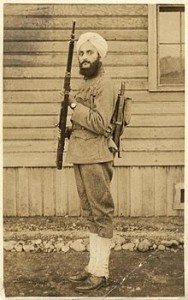 Yesterday, the Washington Post reported that a bipartisan group of 105 Members of Congress sent a letter urging the Department of Defense to end a presumptive ban on devout Sikhs who want to serve in the U.S. Armed Forces.  Over the past several years, civil rights group, The Sikh Coalition, has been working to address the issue of equal opportunity in the Armed Forces allowing all Sikhs to serve.  Since 2009, three Sikh Coalition clients—Major Kamaljeet Singh Kalsi, Captain Tejdeep Singh Rattan, and Corporal Simran Preet Singh Lamba—have received rare and historic accommodations to serve in the U.S. Army with their articles of faith intact.  A timeline of the efforts can be found here.
Yesterday, the Washington Post reported that a bipartisan group of 105 Members of Congress sent a letter urging the Department of Defense to end a presumptive ban on devout Sikhs who want to serve in the U.S. Armed Forces.  Over the past several years, civil rights group, The Sikh Coalition, has been working to address the issue of equal opportunity in the Armed Forces allowing all Sikhs to serve.  Since 2009, three Sikh Coalition clients—Major Kamaljeet Singh Kalsi, Captain Tejdeep Singh Rattan, and Corporal Simran Preet Singh Lamba—have received rare and historic accommodations to serve in the U.S. Army with their articles of faith intact.  A timeline of the efforts can be found here.
The Members wrote:
Dear Secretary Hagel,
We respectfully request that the United States Armed Forces modernize their appearance regulations so that patriotic Sikh Americans can serve the country they love while abiding by their articles of faith.
Devout Sikhs have served in the U.S. Army since World War I, and they are presumptively permitted to serve in the armed forces of Canada, India and the United Kingdom, among others. Notably, the current Chief of Staff of the Indian Army is a turbaned and bearded Sikh, even though Sikhs constitute less than two percent of India’s population. Throughout the world, and now in the U.S. Army, Sikh soldiers are clearly able to maintain their religious commitments while serving capably and honorably.
After hearing from their constituents, many Members of Congress who represent large constituencies of Sikhs signed onto this letter representing the importance and value of political engagement. Â Unfortunately, there were also Members of Congress – some who represent Sikh constituents, who fund-raise within the Sikh community and even sit on the American Sikh Congressional Caucus who did not sign this letter. Â This includes my own Member of Congress, Devin Nunes who “represents” (or that’s what we thought) a large constituency of Sikhs in the Central Valley of California. Â Other missing signatories include Congressman LaMalfa and McClintock – who, in the past, have reached out to the Sikh community for support.
It isn’t enough to simply invite Members to our Gurdwaras and offer them saropay. Â We have to hold our Members of Congress accountable once they leave our Gurdwaras and are challenged to support our issues on the Hill. Â Our presence and political engagement will only make a difference when we continue to take a leadership role to address inequity in our society and establish a strong voice on behalf of the Sikh community.
Guest blogged by Jaspreet Kaur
There has recently been a lot of stir in the Sikh community about the GAP’s new “Make Love†holiday campaign. The Gap used Waris Ahluwalia, a Sikh actor and designer, as a model for one of their promotional pictures. The response from the Sikh and non Sikh community was mixed and social media started buzzing with reactions to the image. A large add of this picture in New York City was recently vandalised and the Gap immediately responded by changing their twitter background to the image. Once again, the Sikh community responded, this time with more positive comments and support for the Gap.
What seems to have been forgotten in all this commotion is that the Gap is a multinational corporation that is only about their bottom line. They are about making money, not love. Their primary interest is to sell a product and by claiming to capture and commodify love, they are selling clothes. While the Gap is being praised for their quick response time and progressive thinking what is dismissed is the understanding that by the time a corporation uses an idea, it is no longer revolutionary. Gap would not have used a Sikh model if it hurt their bottom line. It is already acceptable and that is why the Gap can profit from displaying a turban and beard.
Op-Ed printed in The Harlem Times Nov/Dec Issue
White supremacy typically evokes images of Klansmen on night rides setting homes ablaze with burning crosses or white policemen hosing down African American protesters during the civil rights movement. However, white supremacy is also what led a group of black teenagers to violently attack a Sikh man in Harlem this September. Given that the attackers are not white, how then is white supremacy related?
Early reports indicated that a group of 15-20 young boys assaulted Dr. Prabhjot Singh yelling “Terrorist†and “Get Osama,†leaving him with several injuries including a fractured jaw. What Dr. Singh experienced is not an isolated incident. Though violence against Sikhs has increased in the last 10 years and some attribute this to 9/11, it is part of a much more complex narrative that pre-dates 9/11: long-standing histories of oppression and genocide of Sikhs in pre-colonial and post-colonial India as well as systemic racism in the U.S. Media reports of the attack against Dr. Singh have followed an almost prosaic plot, identifying post 9/11 backlash, Islamophobia, racial profiling and misidentification as the usual suspects but failing to address white supremacy as a root cause in both the past and present.
Though police have not yet identified the attackers, accounts from Dr. Singh and eyewitnesses intimate that his aggressors were young black boys. When Melissa Harris-Perry interviewed Dr. Singh, she remarked on her surprise that his assailants represent a group also targeted by racism. However, it is precisely their experience as targets of racism which likely motivated them. Black males continue to be targeted and profiled as dangerous or unsafe or less competent at work and school, as evidenced recently by the NYPD’s use of stop and frisk tactics and the murder of Trayvon Martin. Historically, groups systematically targeted by racism scapegoat other groups that pose real or perceived threats. During the founding years of the United States, divisions between communities began when slavery and colonialism were the reality of white on black relations. Tensions between people of South Asian and African heritage have an equally long history, spanning the 19th century when Indians first immigrated to Africa and the U.S. Lastly, race still defines our society, the way we see ourselves and other groups of people as it has for centuries though now in a more diverse context.
In many ways, what Dr. Singh experienced was similar to the way Irish, Jewish and Japanese immigrants were scapegoated in the 19th and 20th centuries in the U.S. (more…)
BREAKING NEWS: The Sikh Art and Film Foundation has responded by including a female speaker in next week’s Leadership Summit!!! Great progress. Â Yet, the lack of representation of women and girls from 2004 – 2012 in the film festivals and galas still needs to be addressed, and this is a community wide issue. Â See below for actionable solutions.
Via Email:
November 15, 2013 7:43PM Nina Chanpreet Kaur,
Dear Sikh Art and Film Foundation,
I am very glad to see that Rashmy Chatterjee will be speaking at next Friday’s Leadership Summit.  This is a tremendous gain for our community as most of the speakers at the summit have been men since 2011.  This represents a trend in many Sikh organizations I hope we can change together. As a Sikh woman and resident of NYC for the last 11 years, I have followed your organization since it’s inception.  Over the years, I have attended many of your events and have been so inspired by the films, speakers and attendees.  I have also noticed the lack of representation of women and girls in your programs.  Though you took a step forward this week, I believe you could be doing more to address, highlight and celebrate the challenges and triumphs of Sikh women and girls whether in your Film Festival, Heritage Gala or Leadership Summit.
I understand that your goal is to transcend the dichotomies and binaries of gender and other categories to sustain the universality and equality that our Gurus envisioned in order to promote and preserve Sikh and Punjabi heritage. Â I share your vision and do not condone a gender binary or bias towards either men or women. Â I am also aware that you face limitations as all organizations do, in particular that you must base the selections of films on the submissions you receive. Â However, Sikh men and boys have been a central part of your programs in a way Sikh women and girls have not and this indicates a bias – whether intentional or not.
From 2007 to 2012, none of your Gala awards for Leadership and Vision have been presented to Sikh women. Â In fact, the only women who received awards were for Creativity/Art with the exception of Shonali Bose who received an award for Courage and Shelley Rubin who received an award for Leadership jointly with her husband. Â For 5 years in a row you have only presented Sikh women with awards for Creativity/Art and no other category. Â As a Sikh woman, this sends a message to me and the next generation of Kaurs that women can be honored for creativity and art but not for leadership and vision. Â It raises questions about your beliefs and assumptions related to gender roles and women’s capacities in relation to men. Â This is most certainly not the message young Kaurs should be receiving, nor do I think this is your intention based on the email I received from Ravi last week. Â Â Â Â (more…)
Quebec is at it again. Just a few months after the Quebec Soccer Federation reversed its ban on turbans and other religious headwear on the field after a whole lot of public outcry, officials in Quebec have introduced a proposal to ban “conspicuous religious symbols” from public sector workplaces. These so-called symbols include the turbans, hijabs, and even yarmulkes.
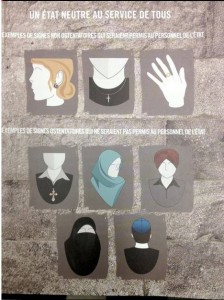
The proposed policy in Quebec would allow public service employees to wear the kinds of “symbols” on the top row but not the bottom five.
The proposal is drawing lots of criticism, including from federal government officials in Canada. Minister of Employment, Social Development and Multiculturalism Jason Kenney stated, “we are very concerned about any proposal that would discriminate unfairly against people based on their religion and based on their deepest convictions,” and promised to put any law that passes through constitutional review.
Ironically, two years ago, Kenney, not particularly concerned about people’s deepest spiritual convictions, announced a ban on burqas from citizenship ceremonies, citing women’s liberation as part of the justification. The new proposed policy in Quebec also includes a burqa ban:
The proposal also requires people receiving state services “to make their faces completely visible,” a measure aimed at banning the burqa, a traditional head-to-toe garment worn by some Muslim women.
Quebec premier Pauline Marois had told a Quebec newspaper that, for her, a day care teacher wearing a head scarf carries a “connotation of a certain gap between the respect of equality between men and women, of a sort of submission.” (link)
A North American based Internationalist movement for the liberation of India
Guest blogged by York Ghadaris
On the centenary of the Ghadar Movement, a conference is being held at York University, Toronto, Canada on April 12 to April 13, 2013, to honour and remember its history, and its contemporary relevance to the revolutionary struggle of people of the Indian subcontinent.
It has been 100 years since the Ghadar Movement was formed by emigrant Punjabis and other Indian nationals in San Francisco in 1913. The Ghadar Movement ranks alongside other revolutionary movements of the early 20th century. In common with revolutionary movements in Latin America, Asia, Africa, and the Black Liberation movements of North America, the Ghadar Movement opposed imperialist powers, colonialism, and strived to develop working class internationalism.
This conference is called, with the participation of approximately 18 scholars and activist from North America and the UK, to remember the Ghadar Movement, its historical development, and to analyze its contemporary relevance to the revolutionary struggle of the people of the Indian subcontinent. The conference will examine the Ghadar struggle as a journey from the 20th century, “a century of revolutionsâ€, to its role in laying the foundation stones for the revolutions of the 21st century. These revolutions are crystallizing in response to the imperialist occupations of Afghanistan, Iraq, Libya, Haiti, the air attacks on Pakistan and the possibility of NATO attacks on Iran and Syria. The economic meltdown of the European Union (EU) and North America resulting in mass unrest are adding to the cause of revolution. They are taking shape in the form of the Arab Spring, the ongoing revolutions in Venezuela, Nepal, and the emerging people’s struggles in India.
“While Sikh American women do a lions-share of organizing and executing the business of the Sikh community, their experiences of faith, family, and community are under-represented in art, literature, and scholarship. In fact, the experience and image of a Sikh woman is obsolete and – in most cases – invisible in the North American milieu. The modern landscapes and political and social influences that shape Sikh women’s lives as well as the subsequent paths they take have yet to be understood, documented, shared and absorbed by our cultural psyche.”
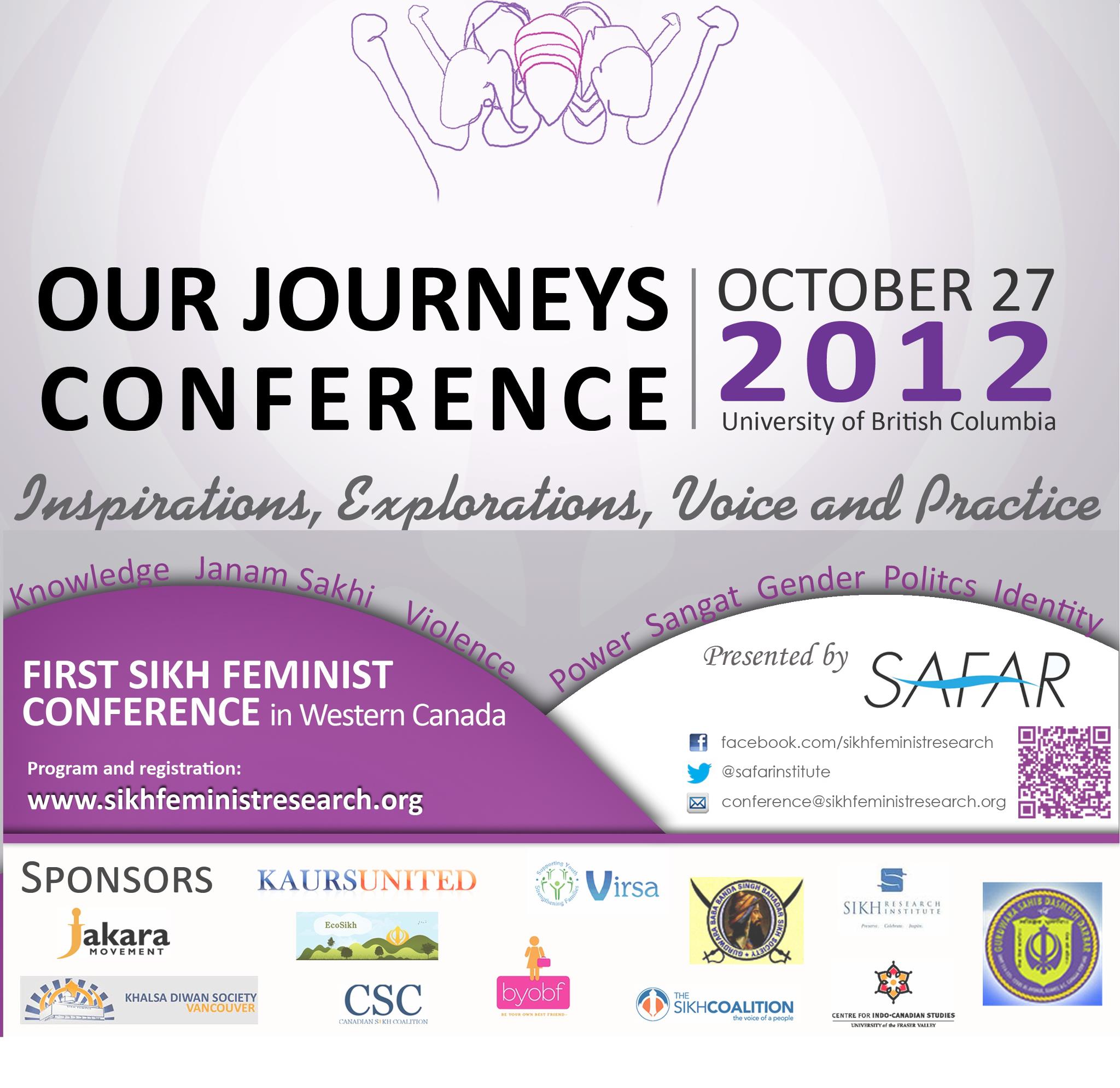 The above description is an excerpt from the “Sikh American Women and Their Love Stories Collection” presentation that will be taking place at this year’s Our Journeys conference, hosted by the Sikh Feminists Research Institute on October 27th. This conference series, the first of its kind, provides a platform to explore the intersections of Sikhi and gender. The goal is to promote research around Sikh feminist issues, heighten participation in critical discourse, promote alliance building and develop partnerships between academic and community organizations.
The above description is an excerpt from the “Sikh American Women and Their Love Stories Collection” presentation that will be taking place at this year’s Our Journeys conference, hosted by the Sikh Feminists Research Institute on October 27th. This conference series, the first of its kind, provides a platform to explore the intersections of Sikhi and gender. The goal is to promote research around Sikh feminist issues, heighten participation in critical discourse, promote alliance building and develop partnerships between academic and community organizations.
Often times, conversations about Sikhs, Sikh issues and the Sikh identity start and end with the Sikh male identity. While this conversation is acutely relevant in the climate of ignorance and discrimination that we live in, it’s also critical that we have conversations that include, are about, and are led by Sikh women.
Having attended last year’s inaugural conference, I look forward to engaging once again in a conversation around women’s issues within the Punjabi/Sikh framework. It’s exciting that we have a platform to celebrate the growth and development of the Sikh feminist voice.
Today is a federal holiday here in the United States — Columbus Day. Many of you probably share my disdain for the continued celebration of a man who helped kick off the colonization of the Americas and the genocide of indigenous peoples over 500 years ago, just as Guru Nanak was laying the groundwork for Sikhi to be born in Punjab. Gloating about his relentless pillaging, Columbus once stated, “I ought to be judged as a captain who for such a long time up to this day has borne arms without laying them aside for an hour.”
We Sikhs are truth-seekers and freedom fighters. Let’s stand with indigenous people throughout the Americas today, mourning those millions whose lives were taken by Columbus and the European colonizers who came after, and celebrating the spirit of resistance and quest for sovereignty which persist today throughout Turtle Island.
We believe at the heart of each Sikh American woman, there are multiple love stories that inhabit the mind, body, and soul.
This one is for you dear Kaurs!
The first ever Sikh Women’s Love Anthology is being created and your voices are needed. This groundbreaking anthology will be a compilation of love stories written by and about Sikh women living in North America and will be published in the form of memoirs, creative non-fiction stories, and creative essays.
Sikh women have an incredible history of powerful and inspiring narratives – often heard through our oral tradition. This project is a way of documenting these narratives and providing a space for women in the Sikh community, connecting with one another to dialogue and document the complexities and nuanced experiences of love as we see it. Love can take many forms – “through lovers holding hands, singing a shabad, eating a good meal to nourish one’s body, hiking an unknown terrain, traveling a new country, holding a sick child close, fighting for civil and human rights or even embarking on the journey to falling in love with ourselves as women and human beings, spiritual beings” [from guidelines]. Love is at the core of our very existence as Sikhs.
This is a wonderful opportunity to pave the path for Kaur voices that we do not often hear. Sikh women who are dedicated to their families, their faith and their activism and manifest their love in dynamic ways. Yet their stories go unheard. Documenting one’s story provides for self-reflection and is “an act of resistance against social, cultural, media, and political forces that want to define women as less than humane“. This is an important way to chronicle narratives for future generations of Sikh American women and men.
Click below the break for submission details. For further information and full submission guidelines, please email sikh.lovestories[at]gmail.com.
Tomorrow, May 1st, is International Workers Day and may very well be one of the largest days of mass action and protest we’ve seen in the North  America in some time. Also known as May Day, the day has a long and rich history of working people courageously fighting for dignity and justice.
America in some time. Also known as May Day, the day has a long and rich history of working people courageously fighting for dignity and justice.
May 1st is the original “Labor Day” in the US. On May 1, 1886, 100,000 workers went on strike in Chicago demanding an eight-hour work day. They were met with violent repression from the police who killed four and injured many more. A massive rally against police brutality was organized in the coming days at Haymarket Square where violence escalated. Martial law was declared in Chicago, and police arrested hundreds of activists. The “Chicago Eight” were arrested and convicted solely because of their political beliefs. Seven were sentenced to death, and four were eventually hanged. Hanged for being freedom-fighters. Sound familiar?
In more recent years, May Day has become a mass day of action for immigrant workers rights here in the United States as well. In 2006, literally millions of immigrants and allies took to the streets in the midst of draconian anti-immigrant legislation working its way through the halls of Congress in the first “Day Without Immigrants.”
90 percent of truckers did not show up for work at the Port of Los Angeles, 27 percent of students did not show up for school. In the Central and Imperial Valleys, farm tools lay idle in the biggest agricultural work stoppage in California’s history. Corporations like Perdue, Cargill, and Swift preemptively gave workers the day off in an effort to save face and minimize production losses. In New York, whole neighborhoods closed as Korean and Latino business shuttered their windows. (see: http://maydaynyc.org/history)
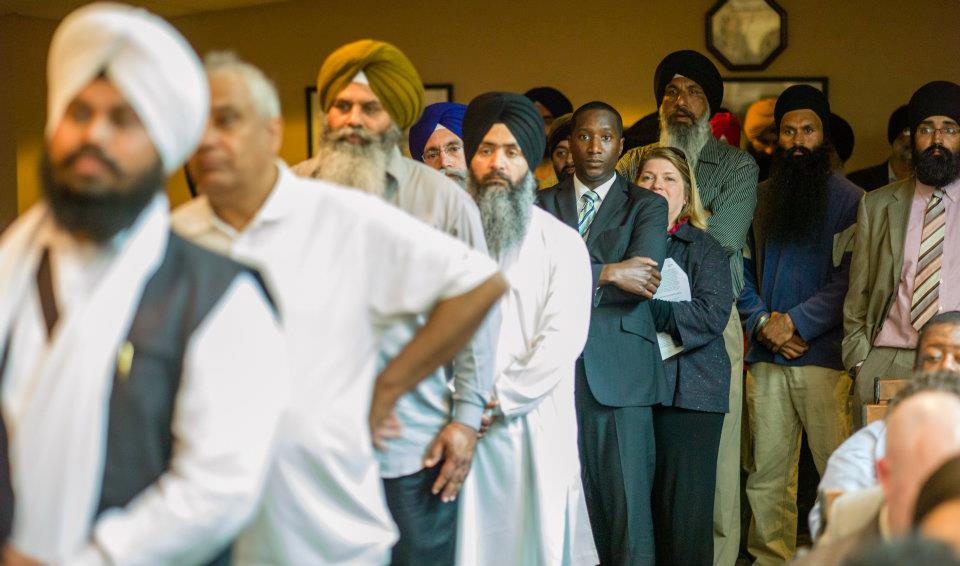
Credit: Karaminder Ghuman, Courtesy: The Sikh Coalition
The Sikh community is leading the way to strengthen law that will protect Sikhs and other religious minorities from job discrimination in the workplace. AB1964 – or the Workplace Religious Freedom Act (WRFA) – has been introduced by Assemblymember Mariko Yamada and is co-sponsored by The Sikh Coalition. Earlier this week, in a show of community leadership, the California Sikh sangat packed a hearing room in the California Assembly and testified in favor of AB1964. As a result, the bill passed through the Labor and Employment Committee and will be considered by the Judiciary Committee on Tuesday April 24th. The Sikh Coalition states that,
This is the first time in California’s history that the Workplace Religious Freedom Act has survived a committee vote, and this is a credit to the power of Sikhs to provide leadership on civil rights issues for all Americans. [link]
Why should Sikhs care about WRFA?
Sikhs suffer high levels of employment discrimination because of their Sikh identity. Many are told to shave their beards; others are told to remove their turbans; some are told that they can only work out of public view. If enacted, WRFA would make it harder in each of these cases for California employers to discriminate against Sikhs.
Guest blogged by Sharandeep Singh
Sidak, run by Sikh Research Institiute, is a diamond among jewels. It is one program, which after attending, completely changes your outlook on Sikhi, and life – I speak unequivocally when I say there is nothing else like it!
As a graduate of Sidak 2011, I want to share my experience to motivate and inspire whoever reads this to attend, so that you too can join the ranks of people who have enriched and developed their understanding of Sikh culture and history.
The annual retreat, based in Texas may seem daunting, particularly for me—it being my first trip to the US—I arrived with a feeling of trepidation, not fully aware what awaited me in the two weeks ahead. Suffice to say, I was not disappointed.
 On December 2nd and 3rd, Sikh youth will have the opportunity to participate in a special workshop that will allow them to learn the power of expression and how it can be used to create change in their life and communities. Inquilab: Raising our Voices, organized by The Sikh Coalition and Slumgods, will bring together hip-hop artists, Mandeep Sethi and Selena Dhillon, to work with South Asian youth as a way of encouraging their engagement with expression. Through this participation, youth can learn how to effectively use art to inspire positive change within their own communities.
On December 2nd and 3rd, Sikh youth will have the opportunity to participate in a special workshop that will allow them to learn the power of expression and how it can be used to create change in their life and communities. Inquilab: Raising our Voices, organized by The Sikh Coalition and Slumgods, will bring together hip-hop artists, Mandeep Sethi and Selena Dhillon, to work with South Asian youth as a way of encouraging their engagement with expression. Through this participation, youth can learn how to effectively use art to inspire positive change within their own communities.
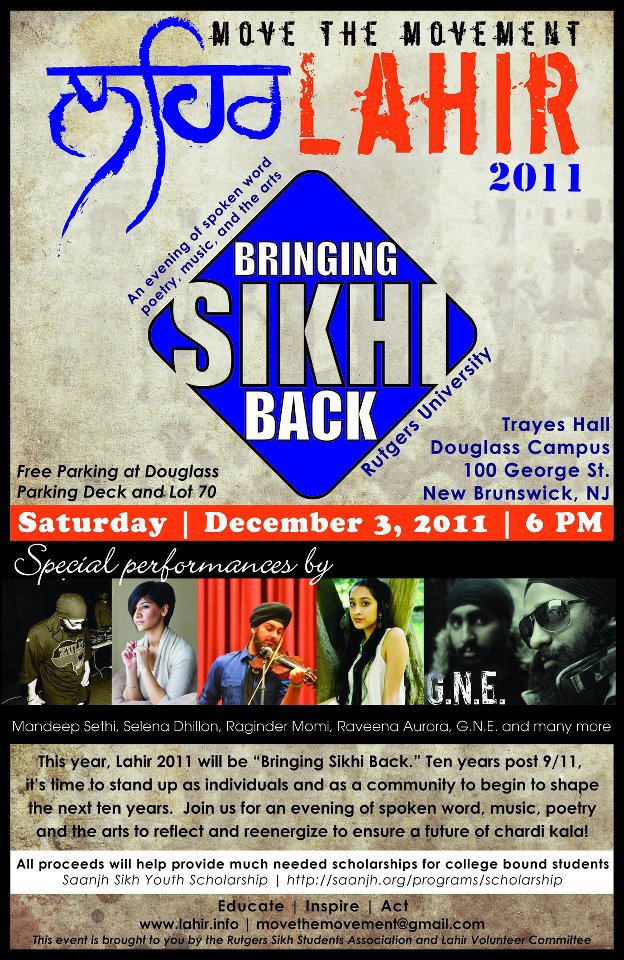 Following the workshop this weekend is Lahir – an event that aims to inspire, educate and awaken the community to rebuild the panth and encourage youth to become activists. The concert will provide a much-needed platform for powerful Sikh artists to express themselves through music, art, film, and poetry. Some more information from the organizers:
Following the workshop this weekend is Lahir – an event that aims to inspire, educate and awaken the community to rebuild the panth and encourage youth to become activists. The concert will provide a much-needed platform for powerful Sikh artists to express themselves through music, art, film, and poetry. Some more information from the organizers:
In past years, Lahir’s central theme focused on 1984 and Punjab. This year, Lahir 2011 will be “Bringing Sikhi Back”. Ten years post 9/11, it’s time to stand up as individuals and as a community to begin to shape the next ten years. Join us for an evening of spoken work, music, poetry and the arts to reflect and reenergize to ensure a future of chardi kala! This year, all proceeds will go to the Saanjh Sikh Youth Scholarship. We need strong voices in our community and we need diverse voices to help us educate others and ourselves about the historical, political, social, and economic issues that affect our community. Therefore, this event is not just for us, but for our future.
Inquilab will take place on December 2nd and 3rd 2011 at South Asian Youth Action Inc | 5405 Seabury St, Elmhurst, NY.
Lahir will take place on December 3rd 2011 at Rutgers University
We encourage you to learn more about these events, and if you are in the area – please attend and let us know how it goes!
Guest blogged by Navjot Kaur
Usually, I can take quite a lot before something unsettles me. Today, my pressure cooker was whistling.
When you think things can’t get much worse, they have a way of doing just that. When it rains, it pours, right? As I went to pick up my son at the end of his second day in Kindergarten, he appeared at the exit door with his patka almost off his head. I thought to myself, they probably had Gym class. But that wasn’t the case. I was quickly informed that another Kindergartener had pulled my son’s patka off his head while he sat on the carpet. I almost cried but didn’t. I felt angry but held it together for my son’s sake. I questioned whether it had been an action of curiosity? I hoped that the response would be positive but it was not. Bullying, in Kindergarten.
 Yes, my son looks different in many ways. He has his visible faith-identity and he also has his deaf identity. He’s smaller than his peers and he has some special challenges but his personality is like the sunshine. Its rays can trickle into even the darkest cracks and brighten up your day. I would not allow this incident to darken his future school days.
Yes, my son looks different in many ways. He has his visible faith-identity and he also has his deaf identity. He’s smaller than his peers and he has some special challenges but his personality is like the sunshine. Its rays can trickle into even the darkest cracks and brighten up your day. I would not allow this incident to darken his future school days.
We came home and once we had cuddled, I reassured him when he asked, “You’re going to tell [boy’s name] to say sorry to me?” I went into another room and cried. I’m not sure why I felt so defeated for that tiny moment but I did. Nevertheless, after talking to my sister, who works for a non-profit organization lobbying for change on such issues, I gained my strength and prepared next steps.
I love books – but I have a special, and perhaps curious, interest in books by and about Sikhs. Perhaps it’s the fascination to discover how similar or different our experiences are. I’m convinced i’m not alone in this. There has been an established interest in South Asian literature for quite some time, but now – with the growing number of authors covering the British Sikh or North American Sikh experience – there is piqued enthusiasm in diasporic “Sikh Literature”. I think it’s important to support this type of work – not simply because the author is Sikh or writes about Sikhs – but because until we have enough of this representation in literature, we need to encourage it’s growth. This also means that authors will be faced with higher expectations from their readers who want authentic stories, sophisticated writing and dymanic story telling – just as we’d expect from any other piece of literature.
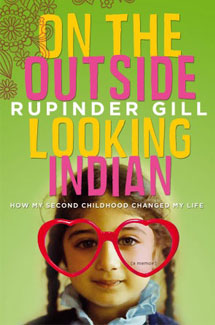 I recently read Rupinder Gill’s memoir, On the Outside Looking Indian. The premise and cover of the book attracted me, perhaps because it reminded me of Sathnam Sanghera’s, If You Don’t Know Me By Now – a book I highly recommend. Gill’s memoir, similar to Sanghera’s, deals with her personal experience growing up as the child of immigrants. Gill’s story is set in Canada and focuses on her year-long quest, at the age of about 30, to fulfill a list of her childhood dreams — learning to swim, going to Disney World, and living in New York etc – activities she didn’t participate in as a child. I found Gill’s descriptions of her childhood to be well-written, funny and often relatable.
I recently read Rupinder Gill’s memoir, On the Outside Looking Indian. The premise and cover of the book attracted me, perhaps because it reminded me of Sathnam Sanghera’s, If You Don’t Know Me By Now – a book I highly recommend. Gill’s memoir, similar to Sanghera’s, deals with her personal experience growing up as the child of immigrants. Gill’s story is set in Canada and focuses on her year-long quest, at the age of about 30, to fulfill a list of her childhood dreams — learning to swim, going to Disney World, and living in New York etc – activities she didn’t participate in as a child. I found Gill’s descriptions of her childhood to be well-written, funny and often relatable.
Without a doubt, many of us can relate to childhoods of inactivity – unless activity consisted of housework – then no, we really didn’t participate in many activities, especially compared to how busy and structured the lives of children are today. There are obvious exceptions to this, however, this is most likely a common experience for many. While Gill’s story is framed around a Panjabi Sikh household, it’s clear that her experiences could be those of many first-generation children whose parents have emigrated to new lands.
